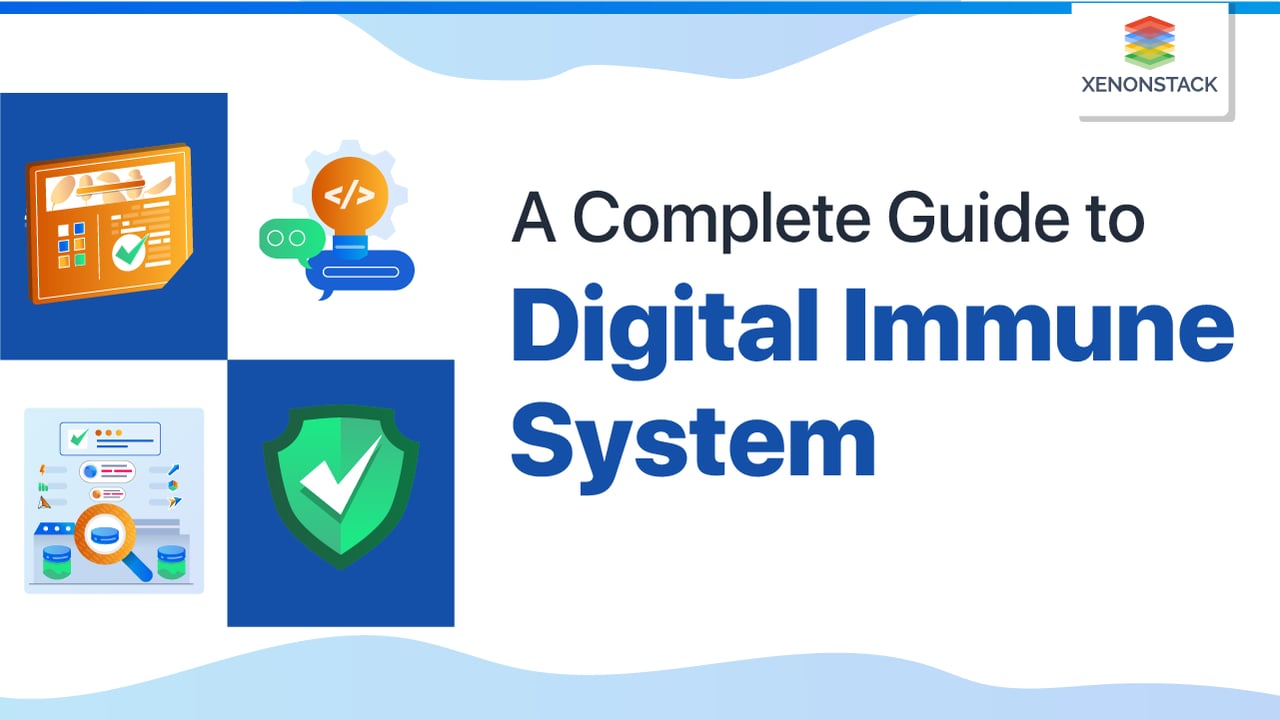
What is the Digital Immune System?
It is a concept that refers to the set of technologies, processes, and practices used by organizations to protect their digital assets from cyber threats. It can be viewed as an analogy to the human immune system, which helps the body defend against infections and diseases. A digital immune system typically includes various tools and technologies such as firewalls, intrusion detection and prevention systems, antivirus software, and vulnerability scanners. These tools work together to detect and prevent cyberattacks and protect against data breaches and other security incidents.
In addition to these technical measures, policies, procedures, and training help employees recognize and respond to potential security threats. This includes password policies, access controls, security awareness training, and incident response plans.
Digital transformation works for enterprises because their leaders drive the change, and they go back to their basics. Taken From Article, Digital Transformation Impact on Businesses
Why is the Digital Immune System necessary?
It is necessary because modern organizations increasingly rely on digital systems to store, process, and transmit sensitive information. This information can include customer data, financial records, trade secrets, and other valuable assets that are attractive targets for cybercriminals. Organizations risk experiencing data breaches, intellectual property theft, financial fraud, and other security incidents without a robust digital immune system.
What are the core concepts of a Digital Immune System?
The core concepts of a Digital Immune System are below:
Threat Detection
The ability to detect and identify potential threats to an organization's digital assets. This includes using technologies like firewalls, intrusion detection systems, and security information and event management (SIEM) tools to monitor network activity and identify suspicious behaviour.
Threat Intelligence
The use of external sources of information to inform threat detection and response. This includes data from security researchers, government agencies, and industry groups to stay up-to-date on emerging threats and vulnerabilities.
Incident Response
The ability to quickly and effectively respond to security incidents, including identifying the source of the attack, containing the damage, and restoring normal operations. This requires an incident response plan, trained personnel, and the necessary tools and resources.
Continuous monitoring and improvement
It must be continually monitored and updated to stay effective against new and evolving threats. This includes regular vulnerability assessments, penetration testing, and ongoing training and education for personnel.
Collaboration
A digital immune system requires collaboration and communication between stakeholders, including IT teams, security personnel, executives, and third-party vendors. This ensures that everyone works together to protect the organization's digital assets and respond to security incidents promptly and effectively.
Digital engineering encompasses various disciplines, including computer science, electrical engineering, mechanical engineering, and more. Click to explore about our, What is Digital Engineering?
What are the major key components of the Digital Immune System?
The major key components of the Digital Immune System are:
Perimeter security
This includes firewalls, intrusion detection/prevention systems, and virtual private networks (VPNs) to protect an organization's network from external threats.
Endpoint Security
This includes antivirus, anti-malware software, and other endpoint protection technologies to protect individual devices such as laptops, desktops, and mobile devices.
Identity and access management
This includes tools and processes to manage user identities and control access to digital assets based on user roles and permissions. This can include multi-factor authentication, single sign-on, and privileged access management.
Security information and event management (SIEM)
This involves collecting and analyzing security event data from across an organization's digital systems to detect and respond to security threats.
Incident Response
This includes processes and procedures for responding to security incidents, including incident reporting, triage, investigation, containment, and recovery.
Threat Intelligence
This includes using external sources of information, such as threat feeds and vulnerability databases, to inform threat detection and response.
Training and Awareness
This involves educating employees about cybersecurity best practices and promoting a culture of security awareness within the organization.

What are the prerequisites for a Digital Immune System?
Below are the prerequisites for a Digital Immune System:
Comprehensive Threat Intelligence
It requires a thorough understanding of the threat landscape. Therefore, organizations must invest in comprehensive threat intelligence tools and technologies that provide up-to-date information on emerging threats, vulnerabilities, and attack techniques.
Robust Security Controls
Organizations must implement robust security controls to prevent cyber-attacks. These controls may include firewalls, intrusion detection and prevention systems, anti-malware solutions, and data encryption technologies.
Access Controls
Access controls are an essential component of any digital immune system. Organizations must implement robust authentication mechanisms, such as multi-factor authentication, to ensure that only authorized users can access sensitive data and systems.
Incident Response Plan
An incident response plan is critical to ensure organizations respond effectively to cyber-attacks. This plan should include procedures for identifying, containing, and mitigating the impact of cyber incidents.
Cybersecurity Awareness
Employees are often the weakest link in an organization's cybersecurity strategy. Therefore, organizations must invest in cybersecurity awareness training to educate employees on cyber-attack risks and best practices for avoiding them.
Continuous Monitoring
It must continuously monitor the network and systems for anomalies, suspicious activities, and signs of compromise. Organizations should implement security information and event management (SIEM) solutions to detect and alert security teams of potential threats in real-time.
Regular Security Audits
Regular security audits are essential to identify vulnerabilities in the network and systems. Third-party security experts should perform these audits to objectively assess the organization's cybersecurity posture.
In today's digital age, cyber-attacks have become a significant threat to organizations, and their consequences can be devastating. To protect against these attacks, organizations must implement a system that combines various technologies, processes, and strategies to detect, prevent, and respond to cyber threats effectively. A robust digital immune system requires a comprehensive understanding of the threat landscape, the implementation of strong security controls and access controls, cybersecurity awareness training for employees, continuous monitoring, and regular security audits. By implementing it, organizations can protect their network, systems, and sensitive data from cyber-attacks, safeguarding their reputation and minimizing the potential impact of a security breach. Therefore, organizations must prioritize developing and implementing a digital immune system as an essential component of their cybersecurity strategy.
- Explore our Software Product Development Services
- Read about Application Modernization and its Challenges
Next Steps with Digital Immune System
Talk to our experts about implementing compound AI systems and how industries and departments use decision intelligence and workflows to become decision-centric. Leverage AI to automate and optimize IT support and operations, enhancing efficiency and responsiveness. Explore how a digital immune system can strengthen your organization's defences by proactively detecting and mitigating potential threats through advanced AI-driven technologies.
.webp?width=1921&height=622&name=usecase-banner%20(1).webp)


